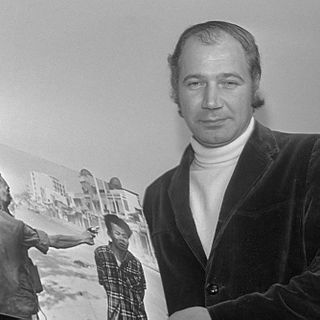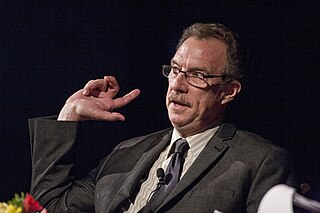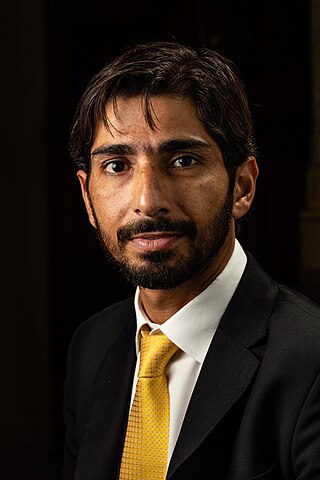
The Pulitzer Prize for Breaking News Photography is one of the American Pulitzer Prizes annually awarded for journalism. From 2000 it has used the "breaking news" name but it is considered a continuation of the Pulitzer Prize for Spot News Photography, which was awarded from 1968 to 1999. Prior to 1968, a single Prize was awarded for photojournalism, the Pulitzer Prize for Photography, which was replaced in that year by Pulitzer Prize for Spot News Photography and Pulitzer Prize for Feature Photography.

Photojournalism is journalism that uses images to tell a news story. It usually only refers to still images, but can also refer to video used in broadcast journalism. Photojournalism is distinguished from other close branches of photography by having a rigid ethical framework which demands an honest but impartial approach that tells a story in strictly journalistic terms. Photojournalists contribute to the news media, and help communities connect with one other. They must be well-informed and knowledgeable, and are able to deliver news in a creative manner that is both informative and entertaining.

The Pulitzer Prize for Feature Photography is one of the American Pulitzer Prizes annually awarded for journalism. It recognizes a distinguished example of feature photography in black and white or color, which may consist of a photograph or photographs, a sequence or an album.

Huỳnh Công Út, known professionally as Nick Ut, is a Vietnamese-American photographer who worked for the Associated Press (AP) in Los Angeles. He won both the 1973 Pulitzer Prize for Spot News Photography and the 1973 World Press Photo of the Year for "The Terror of War", depicting children running away from a napalm bombing attack during the Vietnam War.

Jeffrey Glenn Miller was an American student at Kent State University in Kent, Ohio, who was killed by the Ohio Army National Guard in the Kent State shootings. He had been protesting against the invasion of Cambodia and the presence of the National Guard on the Kent State campus. National Guardsmen opened fire on a group of unarmed students, killing Miller and three others.

Edward Thomas Adams was an American photographer and photojournalist noted for portraits of celebrities and politicians and for coverage of 13 wars. He is best known for his photograph of the summary execution of Nguyễn Văn Lém, a Viet Cong prisoner, for which he won the Pulitzer Prize for Spot News Photography in 1969. Adams was a resident of Bogota, New Jersey.

Lucian Perkins is an American photojournalist, who is best known for covering a number of conflicts with profound compassion for his photograph's subjects, including the war in Afghanistan, Kosovo and the 1991 Persian Gulf War. It has been said that Perkins has a developed style that not only portrays the hopes and weaknesses of the people in his photographs but in an unconventional manner. Perkins currently works at The Washington Post, where he has worked for the past 30 years and resides in Washington, D.C.

David Hume Kennerly is an American photographer. He won the 1972 Pulitzer Prize for Feature Photography for his portfolio of photographs of the Vietnam War, Cambodia, East Pakistani refugees near Calcutta, and the Ali-Frazier fight in Madison Square Garden. He has photographed every American president since Lyndon B Johnson. He is the first presidential scholar at the University of Arizona.

Mary Ann Vecchio is an American respiratory therapist and one of two subjects in the Pulitzer Prize-winning photograph by photojournalism student John Filo during the immediate aftermath of the Kent State shootings on May 4, 1970.
The 1971 Pulitzer Prize went to the following:
Todd Heisler is an American photojournalist and Pulitzer prize winner. He is a staff photographer for The New York Times. In September 2010, he won an Emmy as a member of the New York Times "One in 8 Million" team.

Jahangir Razmi is an Iranian photographer and the author of the entry that won the 1980 Pulitzer Prize for Spot News Photography. His photograph, Firing Squad in Iran, was taken on August 27, 1979 and published anonymously in the Iranian daily Ettela'at, the oldest still running newspaper in Iran. Days later, it appeared on the front pages of numerous newspapers around the world. The photograph was the only anonymous winner of a Pulitzer Prize in the 90-year history of the award, as the identity of Razmi as the photographer was not revealed until 2006. He was finally able to receive the award in person at the 2007 Pulitzer Prizes ceremony.
Carol Guzy is an American news photographer. Guzy worked as a staff photographer for the Miami Herald from 1980 to 1988 and The Washington Post from 1988 to 2014. As of April 2022, Guzy is a contract photographer for ZUMA Press.
Renée C. Byer (1958) was born in Yonkers, New York.

Oded Balilty is an Israeli documentary photographer. He is an Associated Press (AP) photographer and won the Pulitzer Prize for Breaking News Photography in 2007.
Will Counts (Ira Wilmer Counts Jr.; August 24, 1931—October 6, 2001) was an American photojournalist most renowned for drawing the nation's attention to the desegregation crisis that was happening at Little Rock Central High School in Little Rock, Arkansas in 1957. Documenting the integration effort in the 1950s, he captured the harassment and violence that African Americans in the South were facing at this time. He was nominated for the Pulitzer Prize for these photographs.
Patrick Farrell is a Pulitzer Prize-winning American photojournalist for the Miami Herald.
Kim Komenich is an American Pulitzer Prize-winning photojournalist, filmmaker and university professor.

Adnan Abidi is an Indian photographer based in New Delhi. He has been part of three Pulitzer Prize-winning packages for photography as part of Reuters' photography team.












